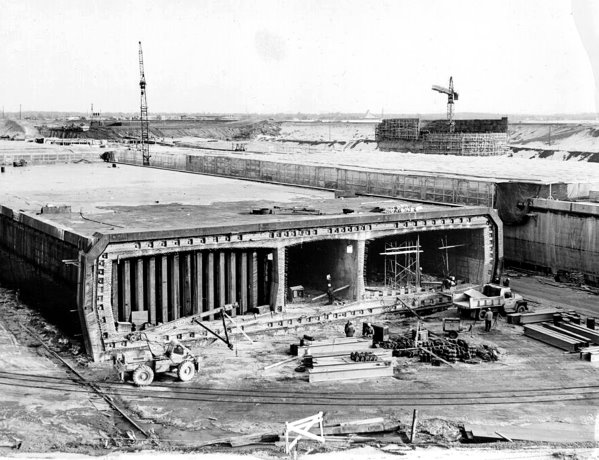It’s not quite like the Little Dutch Boy. In the children’s fable, the school boy put his finger in a dyke to plug a small leak until it was repaired, presumably preventing an eventual catastrophe.
But in Montreal’s almost 50-year-old Louis-Hippolyte Lafontaine Tunnel a small, irregular leak has been a minor, if controllable, problem for just as long.
The 1.4 km tunnel, which runs under the St. Lawrence River and is part of the Trans-Canada Highway system, sprung a leak almost immediately after it was opened in time for Montreal’s Expo 67 world’s fair.
The tunnel was built in seven pre-fabricated sections (its two ends, on Montreal island and the mainland shore were built on site) that were sunk into a trench on the river bed, covered with two metres of fill, above which are 10 metres of water and a busy cargo shipping lane.
The water leak originated with an unaligned connection between sections six and seven which are closest to the exit from the northbound lanes heading to the island of Montreal.
The problem all has to do with the weather.
On the vast majority of days and seasons there is no seepage of water on to the road bed from below the surface. But, on occasion, where there are particularly cold winter days, the concrete contracts enough to let in a very small amount of water that flows on to the road surface.
The seepage is enough to cover all three northbound lanes (the southbound lanes, contained in a separate tunnel tube, as well as a centre service tube, are unaffected), occasionally freezing to ice.
"It’s the whole width of this portion of the tunnel," said Mario St-Pierre, Transports Quebec spokesperson.
"But it’s not a very large surface. You wouldn’t be able to play hockey on that for sure but it gets slippery…we have to maintain it, put salt (down), remove it by hand — that’s what we want to avoid in the future."
As well, a lane has to be closed off while crews deal with the problem, constricting traffic.
The leak was detected immediately after the tunnel was first completed. In fact a small gutter was constructed many years ago to help alleviate the problem.
"But it’s not sufficient," St-Pierre said.
The recent harsh winters have resulted in more water leakage.
"We had a very harsh winter last year and what happened is we had more water seeping in," the official said.
This past Thanksgiving the transport ministry, using its own crew, closed the northbound tube to create a somewhat larger ditch and install drainage to connect to sewers. The excavation was then covered with a grill, flush with the asphalt road bed. In addition, electronic equipment was installed to monitor the area for any future leakage and control.
The water is now expected to collect and flow beneath the surface to the centre service tunnel and out to city sewers.
But attending to the leak problem was only a small portion of the overall long weekend’s work, set at $500,000 and involving a 35 member crew.
Theoretically, the problem could be fixed for good if the tunnel section was uncovered and repairs done in a dry dock setting. But that would cost "many millions," St-Pierre said.
"We don’t think it’s worth the amount of money and we’d have to deal with the traffic of cargo ships that are making way and so on. It’s very complicated for such a thing."
The tunnel handles 118,000 vehicles both ways on average every day and is designed to last 100 years.





Recent Comments
comments for this post are closed